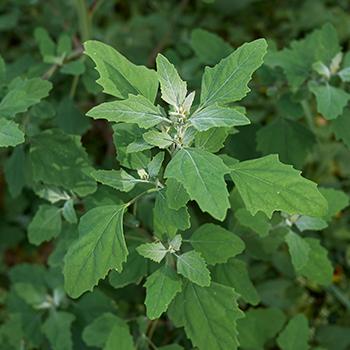A Beginner’s Guide to Responsible Foraging
By Kate Bernot
Get started with foraging in a safe and responsible way.
So, you want to start foraging. Summer fruit trees are full, mushrooms dot the forest floor and the edible world seems ripe for the taking. But where to start? And how can you be sure you’re going about it in a safe, ethical way? Samuel Thayer, author of Incredible Wild Edibles: 36 Plants That Can Change Your Life and other books about foraging, says people don’t “learn to forage” – they learn to forage specific plants, one at a time. Below, Thayer answers a few questions about the basics of foraging.
What is foraging? Do I have to trek into the woods to do it?
Foraging (is) gathering food that was not purposefully cultivated as food. That could be in a wild setting, but for a lot of urban foragers, it could be a crab apple planted in a city park that you’ll make into a jelly.
What does it mean to be a responsible forager?
The first concern is conservation of the plants you’re foraging. There are some plants for which that’s not relevant; your foraging will not affect the reproduction or survival of that plant. In my state of Wisconsin and (in) Minnesota and Michigan, state parks allow you to pick nuts, berries and mushrooms because they recognize that you really can’t hurt a plant population by collecting nuts, berries and mushrooms. Most parks have the regulations posted visibly on signs or online. Otherwise, speak to a ranger by calling the park office. (But) when you’re picking leafy greens or, especially, root vegetables, that requires an understanding of the plant’s ecology to make sure you’re not overharvesting.
How do I understand a plant’s basic ecology? Should I go out with a guide?
Whether or not a plant is an annual, perennial, native or not – these are things that you could learn from a variety of sources, including foraging books and general plant books. (Ed note: You’ll find a few recommendations at the end of this piece.) I never tell people to go out with an expert forager because, well, it’s sort of like saying “Consult your doctor before eating grapefruit,” except that doctors are much easier to find. It’s not realistic and can be daunting.
How can I be sure I’m not trespassing?
That’s the second piece of responsible foraging: making sure you’re doing it somewhere that’s legal and acceptable. The easiest rule of thumb is “be respectful.” A person shouldn’t be unsure of whose land they are on. But “be respectful” (goes beyond) the law. What I mean is don’t do something the average person would find intrusive. For example, a roadside may be a public right of way where I can legally gather, but that doesn’t mean I’m going to do it right near a farmhouse where someone might feel suspicious of my motives. “Would this upset anyone?” is a guide to navigating those situations. … Really, the best place to start foraging is in your own yard. I guarantee you there are 10 or 15 edible things in your own yard.
Such as?
Lamb’s-quarters and amaranth are in almost everybody’s yard. They both have edible greens and grain, but most people are just going to use the greens. Amaranth is best cooked; I usually steam it. Lamb’s-quarters I use raw or cooked. All mustard (greens) are edible, and I don’t care whether they’re in Wyoming or Florida or New York City, everybody has mustards in their yard. The most common of all of them is shepherd’s purse, which is also one of the best of them if people catch it when it’s young. It has tender stems in cool weather only. They are really good sauteed, especially with a little onion or garlic.
How do I know that what I’ve gathered is safe?
We have really powerful instincts that say, “Don’t eat something if you don’t know what it is.” If you can’t identify a plant, don’t eat it. Nothing looks distinct until it is familiar, so learn one plant at a time. Just one plant. If you learn two in a summer, in 10 years that’s 20 plants, and that’s more than most people know.
Thayer’s website, Forager’s Harvest, points to sources including the USDA NRCS Plants Database, which can help you ID plants and determine their safety and use. Thayer also recommends seeking out regionally specific guides to wild plants (ask for assistance at your local library or bookstore), plus the books of Euell Gibbons, a renowned forager who published his first book, Stalking the Wild Asparagus, in 1962. It was reprinted, along with several of his other titles, in 2005.




